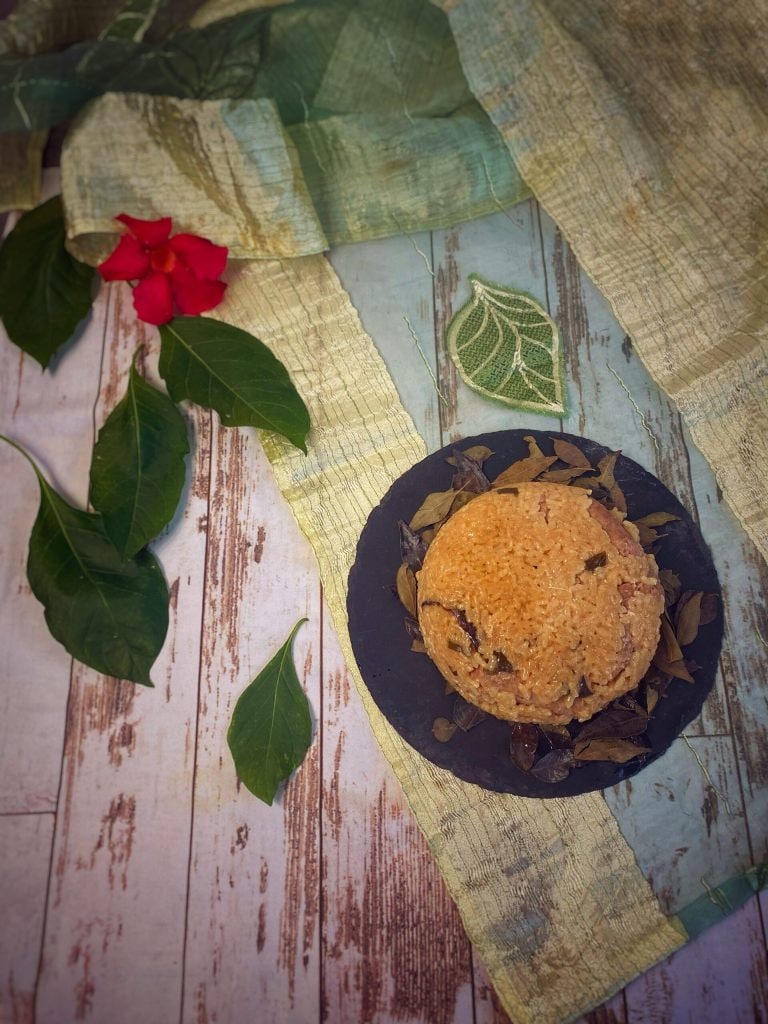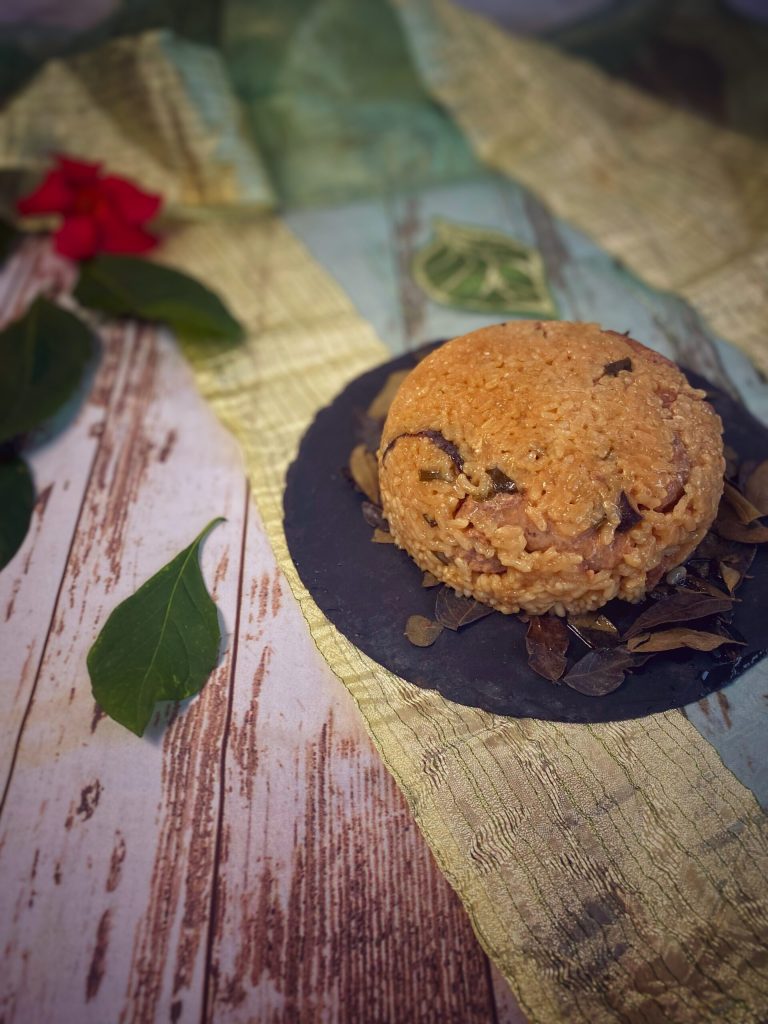Lo Mai Gai, or Nuò Mǐ Jī/糯米鸡, is known as sticky rice with chicken wrapped in lotus leaves. It is one of the most ordered dishes at Cantonese dim sum restaurants.
These are bundles wrapped in lotus leaves filled with glutinous rice, chicken, and other ingredients like Chinese sausage (Lap Cheong/腊肠) or Chinese cured pork belly (Lap Yuk/腊肉), shiitake mushrooms, and dried shrimp, but also salted egg yolks, bamboo shoots, chestnuts, diced carrots, peas, etc.
Besides the version wrapped in lotus leaves, Lo Mai Gai can also be prepared in small bowls (or similar containers) and then turned upside down onto a plate.
Another typical Cantonese dim sum recipe:

- Difficulty: Medium
- Cost: Affordable
- Preparation time: 15 Minutes
- Portions: 4People
- Cooking methods: Steam
- Cuisine: Chinese
- Seasonality: All Seasons
Ingredients
- 1 1/2 cup glutinous rice
- 3 Shiitake mushrooms
- 5 dried shrimp
- 2 lotus leaves
- 4.6 oz chicken
- 1.1 lbs Chinese sausage
- 1 tbsp soy sauce
- 1 tsp oyster sauce
- 1 tsp rice wine
- to taste white pepper
- to taste peanut oil
- to taste salt
- to taste ginger
- to taste minced garlic
- 1 tsp sugar
Steps
• Rinse the glutinous rice under running water. Then soak it in plenty of water for at least 2 hours.
• Rehydrate the dried shiitake mushrooms in water. Slice them (keep the soaking water for later use).
• Add two tablespoons of warm water to the dried shrimp. Soak for 10 minutes. Drain and chop finely (reserve the soaking water for later use).
• Soak the lotus leaves in water. Let rest for 1 hour until they become flexible. Cut off the hard ends of the stems. Divide each leaf into 4 equal pieces.
• Cut the chicken into pieces. Slice the Chinese sausage diagonally into thin slices.
• In a small bowl, mix all the seasonings (soy sauce, oyster sauce, Shaoxing rice wine, sugar, salt, white pepper). Add the shrimp soaking water and 80 ml of the mushroom soaking water.
• Heat 1 tablespoon of cooking oil in a wok or large pan. Sauté the chopped onion, minced ginger, and garlic over medium-high heat.
• Add the dried shrimp and Chinese sausage. Fry until the sausage’s fatty part becomes translucent. Then add the shiitake mushrooms and fry for another 30 seconds or so. Set aside.
• In the same wok, add the chicken, and brown.
• Add the drained glutinous rice, along with the seasoning mixture. Stir so that the chicken and rice are well coated with the sauce.
• Finally, add the fried sausage with the mushrooms and shrimp. Stir.
• Place a piece of lotus leaf with the smooth side facing up. Brush a thin layer of oil on the area where the filling will be placed. Put 1/8 of the rice mixture on the leaf. Wrap it into a bundle with the leaf. Use a piece of kitchen twine to tie it (this step is optional).
• Steam: place all the parcels in the steamer. Bring the water to a boil and steam over medium-low heat for 1 hour and 15 minutes. Remember to check the water level 1-2 times to avoid it drying out.
I used Magic Cooker the magic lid for steaming. I arranged the bundles in the pan, added 2 glasses of water, and cooked covered for 1 minute on high heat and 45 minutes on low heat.
You can purchase Magic Cooker at the link.
FAQ (Questions and Answers)
What can be used instead of lotus leaves?
Parchment paper as a wrapper or steaming in small bowls (brushed with a bit of oil).
Banana leaves.
In North America, banana, lily, or grape leaves are primarily used.What are the variations of Lo mai gai?
In Malaysia and Singapore, there are two types of lo mai gai, the first being the original Cantonese version.
The second, however, is a takeaway variant served in coffee shops and local dim sum specialty stores.
The takeaway lo mai gai differs from the original as the glutinous rice is directly accompanied by chicken and not wrapped in lotus leaves, but enclosed in a simple box.
Sometimes lo mai gai is divided into two smaller rolls, known as chun zhu gai (珍珠雞), which literally translates to pearl chicken.
Thanks to the flexibility of lotus leaves, lo mai gai is generally wrapped to form a parallelepiped.
The zongzi, a variant widespread throughout China and East Asia, instead uses bamboo leaves as a wrapper, which are folded to form a triangular-based pyramid, i.e., a tetrahedron.What is the origin of Lo mai gai?
According to legend, sticky rice with chicken originated in the night market of Guangzhou to meet the needs of customers’ night snacks.
Originally it was steamed in a porcelain bowl with raw glutinous rice, marinated chicken, and mushrooms.
Later, for the convenience of street vendors, the filling was wrapped in lotus leaves, and the portion and ingredients of sticky rice with chicken were no longer limited to the size of a porcelain bowl, with sausages, dried shrimp, salted egg yolks, etc., also added.
Then it spread to Hong Kong and later extended to guinea fowl but in larger quantities.

